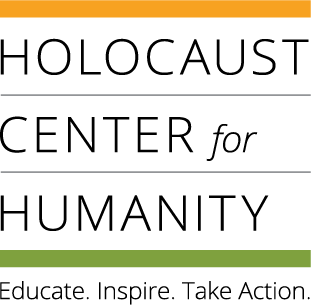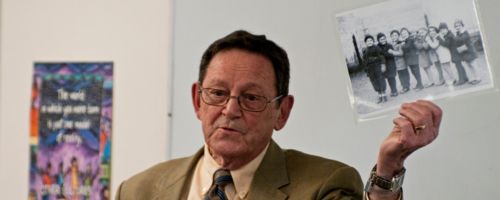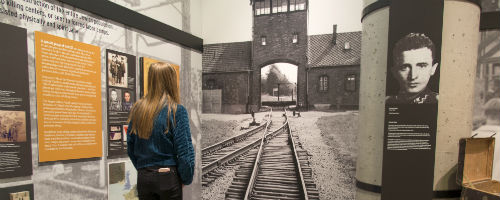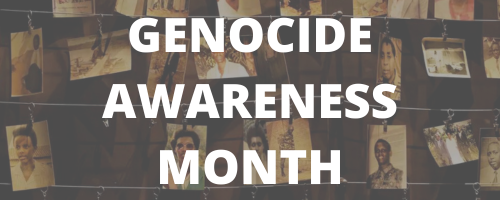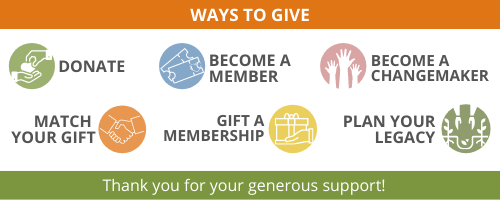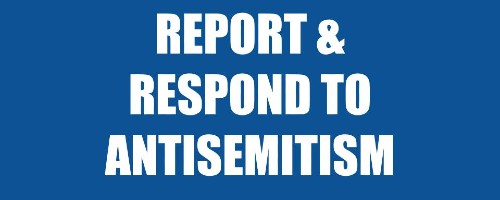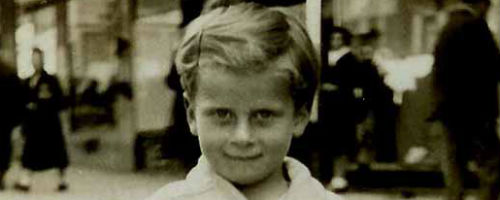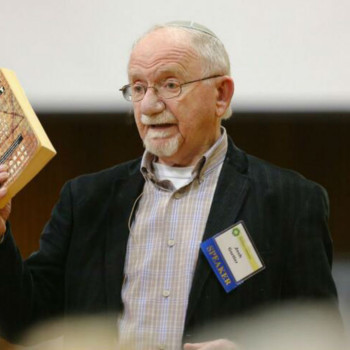
 Josh was born in Tomaszow, Poland in 1936, where his family had lived for almost a century. When the Nazis invaded Poland in 1939, his family was incarcerated in the Ghetto. They made their way to Siberia and Uzbekistan, where life was incredibly harsh but not as dangerous for Jews. After liberation, Josh and his family found refuge in a displaced persons (DP) camp in Berlin.
Josh was born in Tomaszow, Poland in 1936, where his family had lived for almost a century. When the Nazis invaded Poland in 1939, his family was incarcerated in the Ghetto. They made their way to Siberia and Uzbekistan, where life was incredibly harsh but not as dangerous for Jews. After liberation, Josh and his family found refuge in a displaced persons (DP) camp in Berlin.
In 1951, the Gortlers came to Amer ica, and Josh arrived with no formal education or English skills. He persevered, graduating from a Jewish high school before earning Bachelor’s and Master's degrees in Social Work. Josh then moved to Seattle and worked at the Kline Galland Jewish nursing home for almost 50 years. He began telling his story when his grandchildren asked what happened to him during the Holocaust, and he is now an active member of the Holocaust Center for Humanity's Speakers Bureau and Board of Directors. In 2014 Josh was honored by Yeshiva Univer sity with a doctoral degree for his leadership in elder care in Seattle and on a national level.
"There’s a time to think, and there’s a time to talk. And I feel that now is the time to talk and retell these stories for the future generations to come. Because, if we don’t learn from the past, we will make the same mistakes in the future." - Josh Gortler
Survivor Encyclopedia: Washington State - Josh Gortler. Read more about Josh, view photos, and watch video clips.
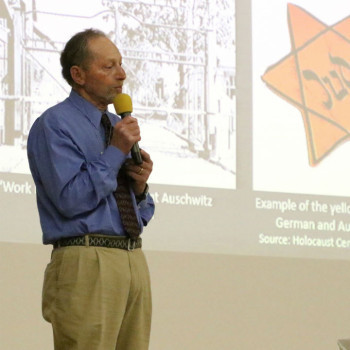
 Joe Lewinsohn was born in Berlinchen, Germany on May 16 , 1937. On Kristallnacht (November 9-10, 1938), the family’s store was vandalized. His father Edwin and 10,000 other Jewish men were arrested and spent weeks in Buchenwald, a German concentration camp. In 1939, scared for their lives, the Lewinsohns fled Germany for Shanghai, their only option. For six years, Joe’s family shared a room with three other refugee families in the decrepit Shanghai ghetto. When the war ended, they went to Chile to live alongside over 10,000 Jews who had spent the wartime years there.
Joe Lewinsohn was born in Berlinchen, Germany on May 16 , 1937. On Kristallnacht (November 9-10, 1938), the family’s store was vandalized. His father Edwin and 10,000 other Jewish men were arrested and spent weeks in Buchenwald, a German concentration camp. In 1939, scared for their lives, the Lewinsohns fled Germany for Shanghai, their only option. For six years, Joe’s family shared a room with three other refugee families in the decrepit Shanghai ghetto. When the war ended, they went to Chile to live alongside over 10,000 Jews who had spent the wartime years there.
Determined to make a better life for the family, Joe’s mother Berta joined her brother Leo in Seattle in 1947. Leo had accompanied the family in 1939 when they fled to Shanghai, but he was able to continue to America. In 1949, the rest of the family joined Berta, sponsored by Seattle bakery owner Harry Lippman. Joe graduated from Garfield High School and joined the Army. Upon his discharge, he earned Bachelors and Master’s Degrees from the University of Washington and began a teaching career in the Seattle School District that would last 35 years. He married Janet Altaras in 1965, and they have two sons (Joel and Peter), numerous grandchildren, and a dog named Mollie. Since 2017, Joe has been a member of the Holocaust Center for Humanity's Speakers Bureau. As a refugee himself, Joe finds it important to reach out to students in similar situations.
Survivor Encyclopedia: Washington State - Joe Lewinsohn. Read more about Joe and view photos of Joe and his family.
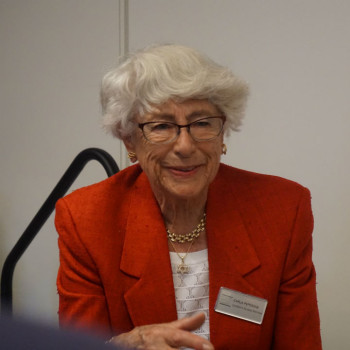
 Carla Peperzak was born in Amsterdam in 1923 to a Jewish family. Although Carla's mother was not born Jewish, she had been adopted by a Jewish family, and as a teen and adult came to embrace the faith. Carla was a typical youth of the time. She played field hockey, skated on Amsterdam’s canals, and went to parties. She also attended synagogue and Hebrew school where one of her fellow students was Margot Frank, the older sister of Anne Frank. In 1940, the year Carla graduated from high school, Germany invaded the Netherlands. By 1941 the Nazis forced Dutch Jews to register with the state, and they were issued identification papers marke d with a “J.” Thanks to a sympathetic SS member, and perhaps due to Carla's mother's background, Carla's father arranged to have her papers changed to remove the J.
Carla Peperzak was born in Amsterdam in 1923 to a Jewish family. Although Carla's mother was not born Jewish, she had been adopted by a Jewish family, and as a teen and adult came to embrace the faith. Carla was a typical youth of the time. She played field hockey, skated on Amsterdam’s canals, and went to parties. She also attended synagogue and Hebrew school where one of her fellow students was Margot Frank, the older sister of Anne Frank. In 1940, the year Carla graduated from high school, Germany invaded the Netherlands. By 1941 the Nazis forced Dutch Jews to register with the state, and they were issued identification papers marke d with a “J.” Thanks to a sympathetic SS member, and perhaps due to Carla's mother's background, Carla's father arranged to have her papers changed to remove the J.
That year, at the age of 18, Carla joined the Dutch resistance. She helped save her aunt, uncle, and two cousins, hiding them at a farmhouse in the Dutch countryside. Later, disguised as a German nurse, Carla rescued her young cousin from a train bound for Westerbork, a transit camp for Dutch Jews who were then sent to killing center s in Nazi-occupied Poland. Throughout the war, she continued to secure hiding places for Jews, published an underground newspaper, and created fake identification papers and ration cards. While Carla and her immediate family survived the Holocaust, 18 members of her family did not. In the aftermath of the war, she met her husband Paul, a Dutch Catholic. In the ensuing decades, Carla lived and traveled across the world with her husband, who worked for the United Nations. In 2004 she moved to Spokane and has been actively engaged in sharing her story as part of the Holocaust Center for Humanity's Speakers Bureau.
“I was 18, 19, 20. I was not married. I did not have any responsibility–only for myself–and that made a big difference...I felt I could help. I had the opportunity.” - Carla Peperzak
Survivor Encyclopedia: Washington State - Carla Peperzak. Read more about Carla, view photos of Carla and her family, and watch video clips.
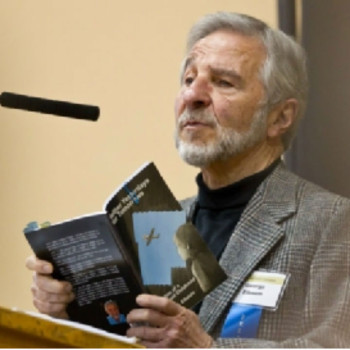
 George Elbaum was born in Warsaw, Poland on August 20, 1938, one year before Hitler invaded Poland and spurred the outbreak of World War II. Within weeks, George's father was called to serve in the army and never returned. Acutely aware of the danger she and her son were in, George's mom dyed her hair blonde and purchased the identification documents of a Catholic woman who had died. In 1942, she smuggled George out of the Warsaw ghetto before paying various Polish Catholic families to hide and raise him. In 1945, George was reunited with his mother, the only other surviving member of his family. They immigrated to America in 1949.
George Elbaum was born in Warsaw, Poland on August 20, 1938, one year before Hitler invaded Poland and spurred the outbreak of World War II. Within weeks, George's father was called to serve in the army and never returned. Acutely aware of the danger she and her son were in, George's mom dyed her hair blonde and purchased the identification documents of a Catholic woman who had died. In 1942, she smuggled George out of the Warsaw ghetto before paying various Polish Catholic families to hide and raise him. In 1945, George was reunited with his mother, the only other surviving member of his family. They immigrated to America in 1949.
For 60 years, George was reluctant to share his story with anyone. He worked towards an engineering career, earning an undergraduate degree, two Master's Degrees, and a Ph.D. from the Massachusetts Institute of Technology (MIT). In 2009, upon viewing "Paper Clips," a documentary chronicling a Tennessee middle school's unique attempt to honor Holocaust victims, George was moved to share his story with the world. He and his wife Mimi Jensen live in San Francisco, but George makes frequent trips to Seattle to visit his children and grandchildren. George is a member of the Holocaust Center's Speakers Bureau.
“I recognize that we who survived the Holocaust have a responsibility to tell our stories to give hope to the slogan ‘Never Again.’” - George Elbaum
Survivor Encyclopedia: Washington State - George Elbaum. Read more about George Elbaum, view photos of George and his family, and watch video clips.
